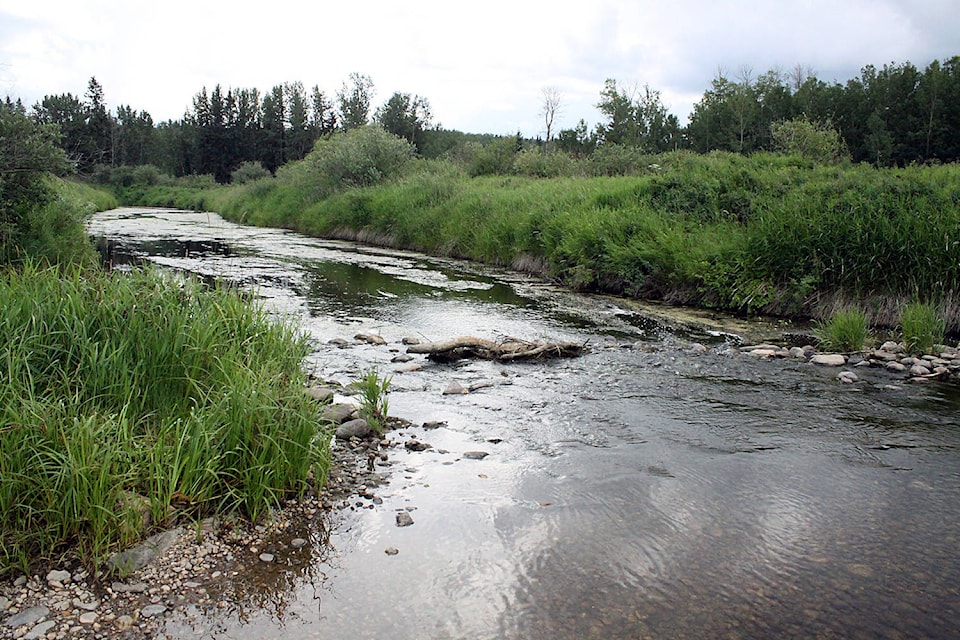With development and other pressures being placed on the Battle River, there is a need to improve its water quality.
However, what should be in a plan to fix or find a solution to the issue really depends on who is asked the question.
Back in March, the cities of Camrose and Wetaskiwin along with the Town of Ponoka wrote a letter to Alberta Environment and Parks (AEP) to challenge potential new waste water treatment regulations for the Battle River.
The letter demonstrated concerns with the huge added costs to the communities to upgrade facilities on such a low flow river and questioning how realistic the rules are when the water quality is already severely compromised by the unregulated agricultural sector.
“We are committed to the overarching principle of the appropriate management of the environment, but we do feel the need to raise our concerns regarding the province’s practices and polices that affect how wastewater treatment is regulated in our communities and in our watershed,” stated the letter.
Then last month, Ponoka County approved a motion to have its municipal development plan reworked to give reason for the Natural Resources Conservation Board (NRCB) to limit approvals of new confined feeding operations in the area. The hope is maintaining the number of dairy farms and feedlots will keep from adding to the problem.
Also making an argument for better management practices for agriculture, and in a bit of a twist, the conservation organization — Battle River Watershed Alliance — agrees in part with the municipalities.
“While more stringent wastewater treatment requirements will support improved quality to an extent, there is a need to address non-point sources to ensure the greatest benefits are realized. If we don’t, we will be missing half of the picture and improvements will be limited by continuing to contribute to degraded water quality,” stated Sarah Skinner, BRWA watershed planning coordinator.
Categorized into point and non-point source pollution, she explained a number of land use practices and pollution sources are contributing to the current nutrient loading of the overall watershed, including the Battle River, with high levels of phosphorus and nitrogen creating various negative affects. Point sources are usually wastewater treatment facilities with non-point generally described as agricultural operations along with stormwater runoff.
In the latest statistics available — a 2014 report from the BRWA — non-point sources contributed between 31 and 79 per cent of the total phosphorus load in the Battle River and between 38 and 85 per cent of the total nitrogen load. Point sources account for the rest.
“The impacts include excessive aquatic plant and algae growth, and the subsequent decrease in dissolved oxygen levels caused by the decomposition of this plant and algae material,” Skinner added.
“This also impacts fish health and populations, the overall health of the aquatic ecosystem, the recreational value of water bodies and more.”
Skinner pointed out that both sources of pollution need to be better regulated to help improve the Battle River, while taking into account the smaller nature of municipalities on the river system.
And while the environment is important, the BRWA believes an economic balance can be found for communities.
“It’s important that the water quality objectives and wastewater limits we set are site-specific and appropriate to the unique characteristics of the Battle River watershed,” noted Skinner of the prairie-fed watershed.
“We experience drastic fluctuations in quantity from month to month and year to year plus. Existing provincial procedures for determining waste water effluent limits may not be readily or easily applied to this type of system. As such, more appropriate procedures and methods for determining these limits in low flow systems should be applied.
